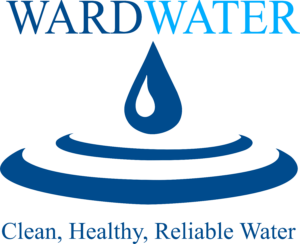“I have Arsenic in my water?” This is probably what you’re saying if you just found out your water tested high for Arsenic. “So, now what do I do?” Well, most likely you’ll; start learning a bunch about Arsenic. You’ll search for and interview treatment companies. You’ll discuss options with your family. You’ll determine a budget that meets your needs. Then hopefully you can choose a system.
Sound overwhelming? It can be, especially if this is your first time at the Arsenic Rodeo! Read on and we’ll give you 3 simple starting thoughts on how to tame this bucking bronco, into a mild mannered pony!
The Arsenic Water Adventure Begins!
So, you have Arsenic? You’re concerned for your family’s health and you need to fix the problem. You’ve scoured the internet for information and are trying to make sense of all the advice out there. You’ve even spoke with a couple of treatment companies so far. Now comes the real confusion…
Company A suggests point of use. Company B recommends whole-house. Company C talks about Arsenic 3 vs. Arsenic 5 and Reverse Osmosis vs. Adsorptive Media. And Company D still hasn’t even called you back! Prices are all over the board. The information websites you’ve visited aren’t always specific and they all basically tell you slightly different things. Sound familiar?
Meandering the Arsenic Maze
Believe it or not having Arsenic in water supplies is quite common-especially in Maine. Arsenic is a natural element (although a potentially harmful one) found in the earth’s bedrock. Like other undesirable elements in our ground, it can find its way into our water supply.
And just like those in-laws who love to show up at your home unexpectedly, with a little bit of understanding and a basic game plan you can always find a way to gently send them back to where they came from. Only in this case, you won’t have to see them again at Thanksgiving!
3 Basics | Getting Rid of Arsenic In-laws
So let’s get right down to business and try to simplify things a bit & help you to start you’re game plan, shall we?
1. How Much Arsenic is in the Water?
Both The EPA and the State of Maine advise not drinking water with an Arsenic level above the recommended maximum contamination level of 10.0 ug/L (parts per billion). Arsenic levels above this represent an elevated risk in experiencing illnesses associated with Arsenic poisoning and toxicity.
Risk factors are based on details such as age, current health, level of Arsenic contamination, volume of water consumed, predisposition to certain diseases and maybe most importantly-your lifestyle and habits.
So how do you determine just how at risk you are? There’s no simple answer to that question. What might be considered high for one household might be of less concern to another.
A couple of hypothetical Lifestyle Examples might help to clear things up a bit.
2. Choosing an Arsenic System for your Lifestyle
Let’s look at a couple of real life scenarios. These are very typical customers we talk with on a daily basis. Hopefully these might help to relate with your own situation.
*Scenario 1: Let’s say you’re a young, healthy, single person who has very little history of family illnesses. You have no children. Visitors, family and overnight guests are rare. You’re on the go a lot and do very little drinking or cooking at home. Your Arsenic test results came back somewhere around 11.0 ug /L.
In this scenario, based on these factors maybe it’s wise and more cost effective for you to consider having an under sink (point of use) system rather than treating your entire home.
*Scenario 2: In this case let’s assume you are a couple in your late 30s with 2 young children. You’re both basically healthy but cancer has been found in certain relatives in your families. You’re household does a fair amount of cooking and drinking using your home’s tap water. Your children at times brush their teeth or even drink water from various faucets or outdoor spigots around the house. Your Arsenic test results came back just over 60 ug/L.
In the above scenario, based on the known factors, we might typically recommend to a family that they consider installing a point of entry (whole house) Arsenic system. Then all faucets and outdoor spigots throughout the entire home are protected. In addition both the cold and hot water supplies will be treated as well.
3. What else is in the Water?
Treating for Arsenic, like many other water contaminants, is greatly affected by the other elements in your water. What may work perfectly in one household could be the worst possible fix in another.
It’s a lot like being a kid and jumping on or getting off a giant teeter totter. The second you jump on or get off the teeter, the kid(s) on the other side immediately experience the “totter” effect. The game changes.
Water chemistry is no different. There’s just far more potential “kids” ready to play the game. For example; certain types of Arsenic treatment systems might work just fine regardless of the water’s pH (acidity), while other treatment methods require perfectly balanced pH to do the job properly and economically. Some might hate high Iron content while others function just fine regardless.
I won’t bore you with a bunch of technical water chemistry details and discussions. But for the point of keeping things simple for this article, the list of water elements below are just a few of the factors that definitely need to be looked at carefully by your treatment professional before choosing a system.
- pH pH plays such a crucial role in when it comes to removing most of the bad stuff from your water-especially Arsenic. It’s typically the first thing we look at with any customer.
Certain types of Arsenic removal mineral require lower pH levels to work properly-otherwise you might end up having to replace a perfectly good system tank WAY sooner than you would have expected.
- Iron, Manganese, Hardness “Garbage in, garbage out.” That’s what my health teacher preached to us in back in school.
Arsenic treatment systems are no different. Load them up with too many minerals like these and you could be in line for some pretty good surprises down the road. It’s like putting clean fuel in your car vs. using dirty and contaminated gas. The cleaner the supply the better you car will run and the more money you’re gonna save in the long run.
- Arsenic 3 vs. Arsenic 5 Now, this part can get a bit confusing at first so, once again, for simplicity’s sake we’ll just cover the very basics of what Arsenic 3 and 5 are and what they mean to you.
Imagine having two different Labrador retriever dogs. They both look alike but they have very different personalities. One is very easy going, cooperative, get’s along great with anyone who walks him and just loves going outside the second you open the door. The other one is an indoor couch potato. His personality is sedentary and stubborn. He only likes certain people. He’s also happy just staying inside right where he is-it takes an act of congress and 4 times the coaxing to get him out of the house!
In laymen’s terms we just described Arsenic 3 and Arsenic 5. Using our scenario here Arsenic 3 is definitely the “couch potato” and is approximately 4 times more difficult to kick out of your water supply when using certain treatment methods. It doesn’t always play well with certain types of treatment systems either and it behaves very differently when it comes to what else is in the water and what you do to the water (treatment systems for other problems).
So, to wrap things up for you, the lesson here is simple. Our best starting advice to you is:
- Know exactly what’s in your water.
- Take a very close look at how you and your family live on a daily basis.
- Make absolutely sure that you are 100% comfortable with the treatment company you deal with and that they’re willing to sit down with you and understand exactly who you are and what you’re family needs-for the long run!
*For additional resources on Arsenic Check out:
Ward Water blog article: Arsenic 101| Is my water safe if it has Arsenic?
The EPA’s Guide to Arsenic in Drinking Water
The Maine Center for Disease Control’s page on Arsenic Facts Q/A





